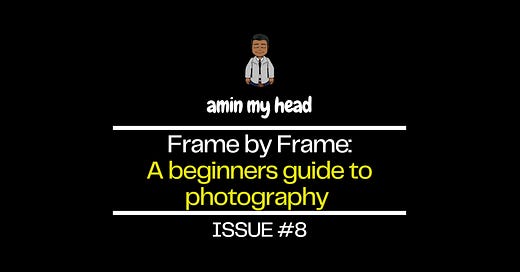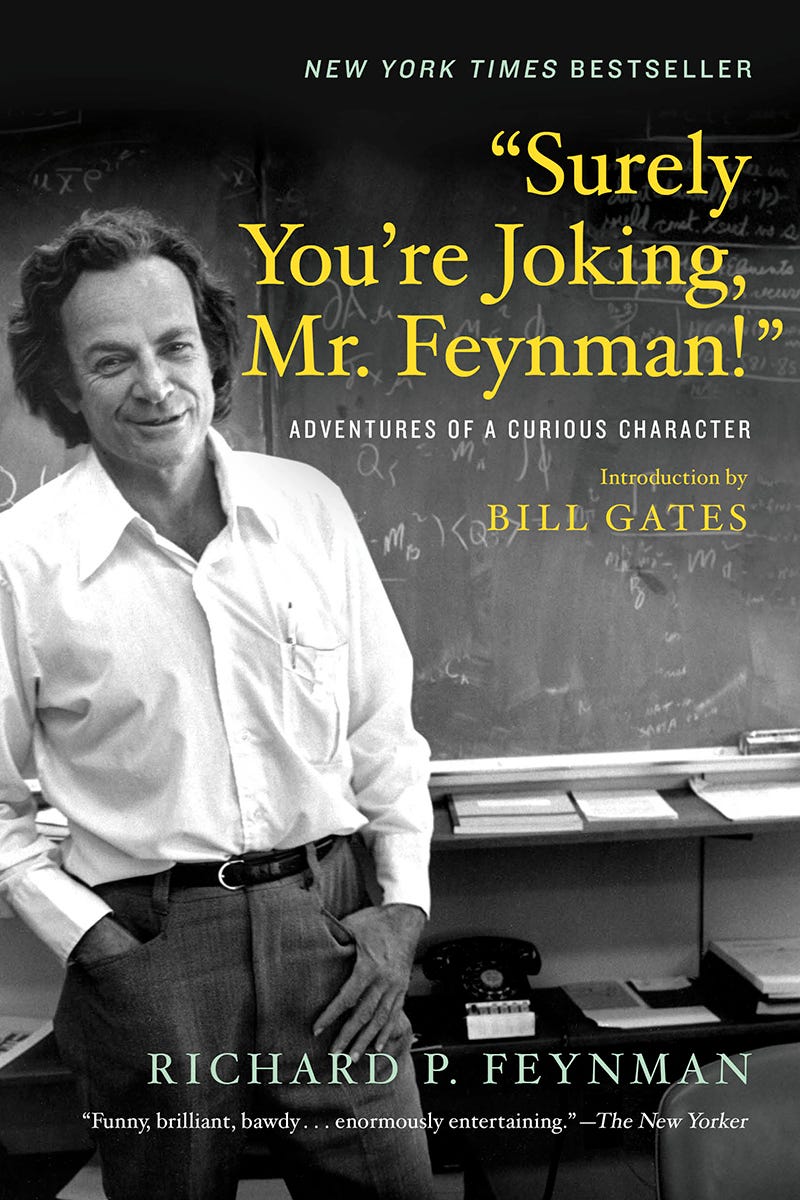Frame by Frame - A beginners guide to photography
A no-nonsense guide on how to begin your journey as a photographer. Explore the essentials of choosing cameras, understanding settings, and composing breathtaking images
I’ve been a photographer for 8 years now. One of the most common questions I get asked is how to start your journey as a photographer.
It’s a journey that has been filled with a lot of mistakes and learnings along the way. So I thought I’d put together a guide to help guide you on your journey to get started.
1. How to Choose a Camera
First things first, the best camera is one that you will use. You don’t need the most expensive or up-to-date equipment.
If you’re in doubt about whether you want to invest in a camera I’d recommend starting with your smartphone before diving into the deep end. Smartphones are incredibly powerful now. Don’t believe me? Check out this Apple Campaign with images shot on an iPhone.
If you are ready to invest, then approach buying a camera like you would with a car. Focus on key factors including:
Setting Your Budget: Cameras range from affordable to high-end, and your budget can significantly narrow down options. Remember to account for accessories like lenses, memory cards, and cases, which are integral to your photography experience.
Understanding Camera Types: Familiarise yourself with the different types of cameras:
DSLRs: Known for their versatility and quality, offering a wide range of lenses and manual settings. They are bulkier but excellent for learning the ins and outs of photography.
Mirrorless: Similar to DSLRs in image quality and interchangeable lenses but more compact and lighter, making them great for travel and everyday use.
Point-and-Shoot: Perfect for absolute beginners or those wanting something simple and portable. They are limited in manual settings but are improving in quality.
Researching, Reading Reviews and Testing Cameras: Look for reviews from both professionals and users to understand the strengths and weaknesses of different models. If possible, visit a store to get a feel for how the camera fits in your hand, as comfort can significantly affect your shooting experience.
Thinking Long-Term: Consider how a camera can grow with you. Can you change lenses? Is there a good selection of compatible accessories? Investing a bit more in a camera that fits your long-term needs can be more cost-effective than upgrading too soon.
2. Basic Camera Settings
Once I’ve got my camera now what? My first recommendation is to learn how to shoot in manual mode. Doing so will give you greater control of your composition.
Similar to driving a car it will take time and thought as you first learn. But over time with practice it will become second nature and before you know it your brain will operate on ‘autopilot’. Here are the basics when building a composition:
Exposure Triangle: Understand the relationship between aperture, shutter speed, and ISO. Adjusting these three settings will allow you to create the ideal exposure or how ‘bright’ a photo is. I’ve broken each one of these settings down further below.
Image Source: Creative Raw
Aperture (f-stop): Controls the size of the lens' opening, affecting the amount of light that enters the camera. A lower f-stop means more light and a shallower depth of field (blurrier background), which is great for portraits. A higher f-stop allows less light but increases the depth of field, ideal for landscapes.
Shutter Speed: Dictates how long the camera's sensor is exposed to light. Faster speeds freeze action but let in less light, while slower speeds create motion blur but can brighten a photo. Use a tripod with slow shutter speeds to avoid camera shake.
ISO: Adjusts the camera sensor's sensitivity to light. A lower ISO (100-200) is for bright conditions and provides the clearest image. A higher ISO is necessary in low light but increases the grain or "noise" in images.
Manual Focus vs Auto-Focus: Auto-focus is convenient for beginners, but learning manual focus gives you more control over what part of the image is sharp, especially in complex lighting or compositions.
3. Advice to First-Time Photographers
Practice Regularly: The more you shoot, the better you'll understand your camera and how to manipulate photos. The renowned photographer Henri Cartier-Bresson famously said 'Your first 10,000 photos are your worst'.
Learn Composition: Study the rule of thirds, leading lines, framing, and other composition techniques to create more engaging photos.
Seek Inspiration: Look at work from other photographers, visit galleries, or join photography communities. One of my favourite compositions is to shoot through gaps in everyday objects like railings to frame photos. This style was inspired by photographer Anthony Hernandez and his ‘Screened Pictures’ which I’d previously discovered at an Art Gallery.
Embrace Mistakes: Mistakes are part of the learning process. Each misstep is a lesson in becoming a better photographer.
Post-Processing: Learn the basics of photo editing through tools like Lightroom or CaptureOne to enhance your photos and correct common issues. If you’re a student you can also access discounted prices for Adobe.
Explore your curiosity: When thinking about how to compose your image get creative. Just try a new technique or any random idea that comes to into your especially as you start your career.
Shoot in RAW: RAW files contain more data than compressed formats like JPEG, providing higher-quality images and greater flexibility in post-processing. This will allow you to make more detailed adjustments to exposure, white balance, and other settings.
Never Delete Your Photos Prematurely: Keep all your shots until after the shoot when you can review them on a larger screen. Sometimes, images that don't look promising on your camera's small screen might surprise you with their potential when seen on a larger display.
Starting as a photographer is about combining technical knowledge with creativity. Remember, every great photographer started as a beginner, so embrace the journey and the continuous learning that comes with it.
4. Recommended Cameras for Beginners
I’m typically quite hesitant to recommend one specific camera. As I said before the best camera is one that you will use. Cameras will change over time so it’s important to do your research at the time of purchasing.
Some popular cameras over the past year, which I have used or heard great things about include:
Fujifilm X-T30 II: This camera offers excellent image quality and user-friendly controls in a compact and stylish design. It's known for its colour reproduction and versatility in various shooting conditions, making it an ideal all-rounder for beginners.
Sony ZV-E10: Designed for vloggers and content creators, the ZV-E10 features great video capabilities with a flip-out screen and reliable autofocus. It's compact, easy to use, and doubles as a capable stills camera, perfect for those exploring both photos and videos.
Ricoh GR III: A favourite for street photography, the GR III offers DSLR quality images with its large sensor in a pocket-sized body. It has a sharp 28mm lens and is ideal for photographers valuing portability and simplicity.
Fujifilm X100V: With its hybrid viewfinder, distinctive design, and superior image quality, the X100V is a premium compact camera. It's versatile for various shooting scenarios and loved for its unique film simulation modes, appealing to both enthusiasts and professionals.
5. Resources for New Photographers
Online Tutorials: Explore courses on Udemy, Coursera, and Skillshare, and don't miss out on the wealth of knowledge available on YouTube. Notable YouTubers include:
Peter McKinnon (@petermckinnon) - Offers engaging tutorials on photography and cinematography.
Mango Street (@mangostreetlab) - A channel run by a couple, focusing on easy-to-understand, straightforward photography and videography tutorials.
Sean Tucker (@seantuck) - Delivers a thoughtful approach to photography, discussing techniques and the philosophy behind capturing images.
Books: Enhance your understanding with classics like "Understanding Exposure" by Bryan Peterson and "The Digital Photography Book" by Scott Kelby.
Photography Communities: Dive into forums such as Reddit's r/photography or photography groups on Facebook for peer advice and critiques.
Inspiring Photographers on Instagram:
Demas Rusli (@demas) - A Sydney-based architect and photographer known for his urban and architectural photography with a distinct, surreal style.
Chris Burkard (@chrisburkard) - An adventure and landscape photographer known for his stunning natural landscapes and daring adventures.
Paul Nicklen (@paulnicklen) - A wildlife photographer with breathtaking images of animals and ecosystems, aiming to inspire conservation.
Annie Leibovitz (@annieleibovitz) - A legendary portrait photographer with a unique, intimate style, capturing some of the most influential figures of our time.
Software: Get familiar with Adobe Photoshop and Lightroom for editing. Many online tutorials are available to help you start with photo editing.
When diving into photography, your growth is driven by a combination of theoretical knowledge and hands-on practice. The best way to learn is by doing, so take your camera out and start capturing the world one shot at a time. As you grow, continually seek new information and techniques, and don't forget to connect with other photographers!
What am I reading/listening to?
"Surely You're Joking, Mr. Feynman!" is a witty and captivating memoir by the renowned physicist Richard Feynman. Feynman shares a collection of humorous and insightful anecdotes from his life, offering readers a glimpse into his adventurous and curious character. From his work on the Manhattan Project to his adventures playing bongo drums in a Brazilian nightclub, Feynman's stories showcase his brilliant mind, irreverent sense of humour, and insatiable curiosity.
Words of Wisdom
“The camera is an instrument that teaches people how to see without a camera” - Dorothea lange







